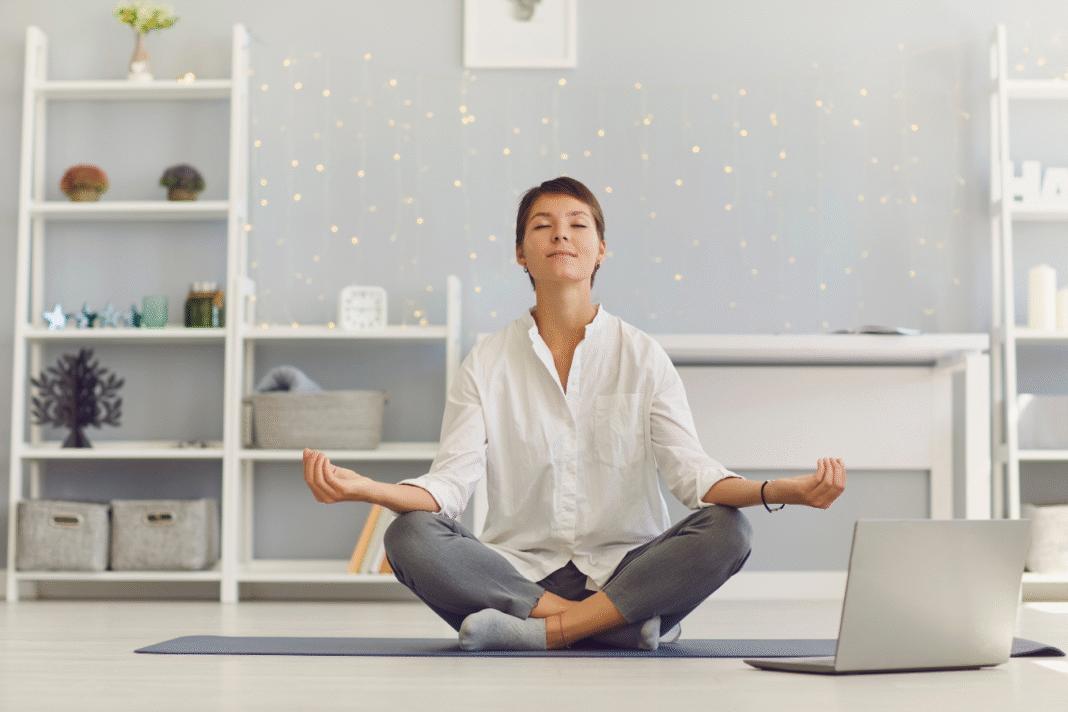Mindfulness meditation has become one of the most popular practices for reducing stress, improving focus, and bringing peace into daily life. While the concept sounds simple—being present in the moment without judgment—many people find it challenging to actually practice effectively. The good news is that mindfulness meditation isn’t about perfection. Instead, it’s about building awareness, step by step, in a way that fits naturally into your life.
In this guide, we’ll break down how to practice mindfulness meditation effectively, explain its benefits, share practical steps, and provide tips to make your journey easier.
What is Mindfulness Meditation?
Mindfulness meditation is the practice of paying attention to the present moment with an open and non-judgmental attitude. It involves observing your thoughts, emotions, bodily sensations, and environment as they are—without trying to suppress or change them.
The goal isn’t to “empty your mind” or stop thinking. Instead, it’s about developing awareness and creating space between yourself and your thoughts. By practicing regularly, you learn to respond to situations calmly instead of reacting impulsively.
Why Mindfulness Meditation Matters
Before we get into the “how,” let’s talk about the “why.” Practicing mindfulness meditation effectively can transform both your mental and physical well-being.
Benefits of Mindfulness Meditation:
- Reduces stress and anxiety by calming the nervous system.
- Improves focus and concentration by training your attention.
- Promotes emotional balance by helping you manage negative thoughts.
- Enhances sleep quality through relaxation techniques.
- Strengthens self-awareness by connecting you with your inner self.
- Supports physical health by lowering blood pressure and boosting immunity.
When you see mindfulness not just as a practice but as a lifestyle, the results are even more powerful.
How to Practice Mindfulness Meditation Effectively
Now let’s explore the step-by-step process.
1. Find a Quiet Space
Choose a calm and comfortable spot where you won’t be disturbed. It doesn’t have to be fancy—a quiet corner in your bedroom or even a peaceful spot in a park works well. Silence helps you connect with your inner world.
2. Choose a Comfortable Posture
You don’t need to sit cross-legged on the floor unless you want to. You can sit in a chair with your feet flat on the ground, rest your hands on your lap, and keep your back straight but relaxed. Comfort matters because physical discomfort can become a distraction.
3. Focus on Your Breath
Close your eyes gently and bring your attention to your breathing. Notice how the air enters through your nose, fills your lungs, and leaves through your mouth. You don’t need to change your breathing—just observe it naturally.
4. Notice When Your Mind Wanders
Your thoughts will drift—it’s completely normal. Instead of getting frustrated, simply acknowledge the distraction and gently bring your focus back to your breath. This “returning” process is the heart of mindfulness practice.
5. Observe Without Judgment
Mindfulness meditation is not about labeling thoughts as good or bad. If you feel restless, anxious, or even bored, just notice it. Imagine your thoughts as clouds passing by in the sky—you don’t need to chase them.
6. Start Small and Grow
If you’re new, begin with 5 minutes daily. Once comfortable, gradually extend to 10, 15, or 20 minutes. Consistency matters more than long sessions.
7. Use Guided Meditations
If focusing on your own feels hard, try guided mindfulness meditations through apps like Headspace, Calm, or free videos online. A calm voice can help direct your focus and make practice easier.
8. Bring Mindfulness into Daily Life
True mindfulness isn’t limited to sitting meditation. Practice while eating (notice textures and flavors), walking (feel each step), or even washing dishes (pay attention to sensations of water and soap). Integrating mindfulness into small tasks makes it more natural.
Common Mistakes to Avoid
Many beginners stop practicing because they feel they’re “doing it wrong.” Here are common mistakes and how to avoid them:
- Expecting instant results: Mindfulness is a skill—it grows with time.
- Trying to block thoughts: The goal is awareness, not suppression.
- Being too rigid: There’s no single “perfect” posture or method.
- Skipping consistency: Practicing 5 minutes daily is better than 30 minutes once a week.
- Judging yourself: Be kind to yourself—self-compassion is part of mindfulness.
A Simple 10-Minute Mindfulness Routine
Here’s a sample practice to help you get started effectively:
| Minute | Practice Step | What to Do |
|---|---|---|
| 1–2 | Settle in | Sit comfortably, close your eyes, take a few deep breaths. |
| 3–6 | Focus on breath | Notice your inhale and exhale without trying to control them. |
| 7–8 | Body scan | Shift attention slowly from head to toes, observing sensations. |
| 9 | Acknowledge thoughts | Notice distractions, gently return to your breath. |
| 10 | Gratitude reflection | End by thinking of one thing you’re grateful for. |
This short session builds focus and calmness while being manageable for busy schedules.
Tips for Staying Consistent
- Meditate at the same time daily—morning or evening works best.
- Set reminders on your phone or calendar.
- Start with short sessions instead of overwhelming yourself.
- Track your progress in a journal.
- Join a meditation group or community for motivation.
Remember, consistency is more important than perfection.
FAQs About Practicing Mindfulness Meditation
1. How long should I meditate daily for best results?
Start with 5–10 minutes a day and gradually increase to 20–30 minutes if possible. The key is daily consistency, even if it’s short.
2. Can mindfulness meditation help with anxiety?
Yes, mindfulness has been shown to reduce symptoms of anxiety by calming the nervous system and helping you respond thoughtfully instead of reacting impulsively.
3. Do I need to sit in a specific posture to meditate effectively?
No, posture is flexible. You can sit in a chair, on the floor, or even lie down (though lying down may lead to sleep). What matters is being relaxed yet alert.
4. What if I get distracted by my thoughts every time?
That’s completely normal. The practice is in noticing distractions and bringing your focus back. Each time you do this, you’re strengthening your mindfulness “muscle.”
5. Can I practice mindfulness meditation without guidance or apps?
Absolutely. While guided meditations are helpful, mindfulness is about awareness. Simply focusing on your breath and observing the present moment is enough.
Final Thoughts
Learning how to practice mindfulness meditation effectively is less about “doing it right” and more about showing up for yourself each day. Even just a few minutes of mindful breathing can shift your mood, reduce stress, and bring clarity into your life. Over time, mindfulness becomes more than a practice—it becomes a way of living, helping you face challenges with calmness and presence.
Start small, stay consistent, and remember: every mindful breath is a step toward peace.




